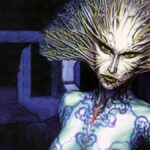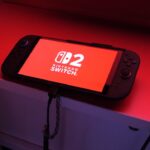Aging gracefully isn’t an option for everyone, but talented game developers have the power to guide the evolution of their iconic characters. Heroes who first appeared on previous PlayStation console generations are now packed with far more detail on PlayStation 4. With PS4 now in its seventh year, and the recent 25th Anniversary of PlayStation overall, we invited creative developers to showcase how far their characters have come. Discover how many polygons beloved characters boast on PS4 compared to their humble PlayStation origins.
Kazuya Mishima, Tekken Series
Facial Polygon Count Comparison
PlayStation: ~100 (estimated)
PlayStation 4: 2,800 for the head (6,000 including hair and inside mouth)
“You can see a stark difference between the model for Kazuya in Tekken 1 and that of Tekken 7,” says Michael Murray, producer of Tekken at Bandai Namco “As a character, Kazuya Mishima doesn’t really speak a lot in the game, and much of the character is portrayed in his eyes and facial expression. Not only that, but the added detail in the Tekken 7 model lets us more accurately portray the character by giving a sense of age, and also the scars on his face that help tell the story of the character.”
Kratos, God of War
Facial Polygon Count Comparison
PlayStation 2: 1,200
PlayStation 3: 5,700
PlayStation 4: 32,000
“The Kratos model for the new God of War was created from scratch with the intent of pushing the technology of what we have done before at Santa Monica Studio,” says Rafael Grassetti, art director at Santa Monica Studios. “The geometry was made with a higher density from most of the games because we were going to explore things like muscle deformation systems underneath the skin and we needed enough geometry to drive that information.
“Kratos from God of War 2 (PS2) had 5,700 polygons for his entire body, 1,200 of those for the face and used five textures. Kratos from God of War 3 (PS3) had 64,000 polygons for his entire body, 5,700 for the face, which was already a big improvement. But compared to what we can do with the PS4 system, it is still not enough for what we wanted to accomplish. The Kratos for God of War (PS4) has 80,000 polygons in total, with 32,000 for the face – 30x what we had for the PS2 models.
“That allowed us to create systems that could deform that geometry and achieve a level of detail for the muscles that we couldn’t do before. On top of that, we used a combination of layers of normal maps for smaller wrinkles and pores that we weren’t able to use in past generations because of the limitation of textures. Kratos (PS4) uses over 140 textures.”
Rathalos, Monster Hunter Series
Facial Polygon Count Comparison
PlayStation 2: 1,390
PlayStation 4: 11,274
Palico, Monster Hunter Series
Facial Polygon Count Comparison
PlayStation 2: 144
PlayStation 4: 11,274
“From the very first Monster Hunter on PS2, our goal was to show if something is hard or solid, how do we convey that quality in the game and if something’s alive, how can we make it feel as alive as possible,” says Kaname Fujioka, MHW: Iceborne executive director and art director at Capcom. “At that time, it was difficult to dynamically process fine textures and details, complex light reflections, and colors of light had to be baked into the texture.
“However, in recent years, lighting technology has improved significantly due to advancements in hardware specifications and CG technology. So the glossy look of skin surfaces and monster hides, the soft texture of fur, and the light of the eyeball can all be processed in real time, which is very important for more realistic facial expressions. In addition, I think that the finer detail such as minor changes in facial expressions can also be shown thanks to this technology.”
Sir Daniel Fortesque, MediEvil
Facial Polygon Count Comparison
PlayStation: 60
PlayStation 4: 1,734
“Thanks to a much increased poly count, (60 vs 1,734) and far more joint support, we were able to create a wide variety of emotions to flesh out our interpretation of who Dan was and how he should act in his unique resurrected situation,” said Justin Rosenthal-Kambric, animator at Other Ocean Interactive. “I was particularly excited to set up the ability to squash/stretch Dan’s skull which helped in exaggerating some of his more emotional actions, most notably when he tears off his arm or when he munches on that chicken drumstick.”
Has reflecting on the polygonal progression of these iconic PlayStation characters inspired you to think about how your favorite hero (or villain!) has aesthetically evolved? Share in the comments below.


















